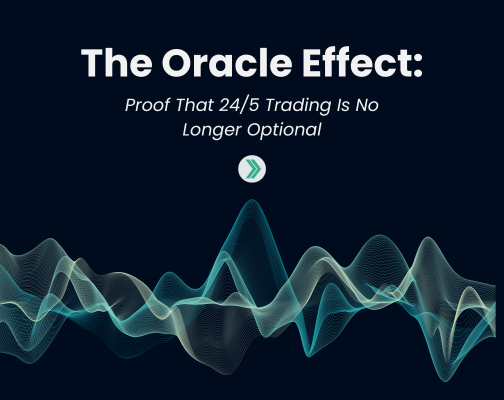The ASX All Ordinaries Among Australian Indices
The All Ordinaries (All Ords) has been a prominent index since 1979, most notably for benchmarking the Australian equity market. The index is operated by the Australian Stock Exchange (ASX) in partnership with S&P Dow Jones Indices (S&P). Despite the breadth of the index, the All Ords’ use in financial products is limited, instead replaced with S&P/ASX and other emerging index providers’ offerings. For asset managers—whether building exchange traded products (ETPs) for clients or hedging with index derivatives—understanding the All Ordinaries place in the index landscape is a useful precursor to understanding the demand for basket products in one of Asia-Pacific’s largest markets.
History of the All Ordinaries Index
Originally, the All Ords was designed to replace the indices of Australia’s regional exchanges as a broad, national view for calculating market-wide returns. It was founded on the simple requirement that an included firm be among the 500 largest by market capitalization. This set the wide berth of the All Ords’ representation at roughly 87% of the equities market and AU$ 1.3 trillion (USD 840 billion) in market capitalization. However, 20 years after it was developed, ASX’s All Ords index ceased to be used in financial products. Concerns about the liquidity of listed companies at the bottom of the All Ords stimulated demand for an institutionally investable index with liquidity requirements.
After forming a partnership with S&P Global in 1999, S&P/ASX started an investigation into index alternatives to the All Ords. Market consultations with fund managers revealed the demand for 2 types of indices—one to benchmark the market and one with the liquidity to support ETPs and other derived financial products. The All Ords became one index in a product suite of various-sized market capitalization indices.
The methodology and upkeep of the All Ords reflects S&P’s intention of keeping it as a market-wide benchmark. The All Ords is the only index in the S&P/ASX capitalization index family that does not use a float-adjustment market capitalization method. That method excludes shares of long-term shareholders who are unlikely to contribute to turnover when calculating liquidity. The All Ords also rebalances annually where the other market capitalization indices rebalance quarterly. The other indices in the family, like S&P/ASX 200 and S&P/ASX 300, provide narrower, more liquid alternatives to institutional investors to build and trade basket products as well as trade derivative contracts.
The S&P/ASX Index Family
S&P/ASX’s large index family is supported by Australia’s high demand for managed funds. The mandatory superannuation policy in Australia requires employers pay 9.5% (2020) of employee salaries to pension funds. As a result, Australia boasts the 4th largest pension market in the world.
The All Ordinaries remains a popular go-to benchmark for Australia’s equity market, but firms that trade ETPs to serve the national demand build their portfolios on other indices in S&P/ASX family. Among the top five most highly traded exchange-traded funds in Australia, three of the underlying benchmarks are maintained by S&P/ASX.
One of S&P/ASX’s most popular indices is the S&P/ASX 200. Marketed as ASX’s most investable benchmark for options and other index-derived products, it rebalances quarterly and requires each component stock to have a relative liquidity of 50%. The S&P/ASX 300 requires a relative liquidity of 30%. Relative liquidity is defined as each stock’s median liquidity divided by the average median liquidities of the 500 companies in the All Ordinaries.
ASX also offers the S&P/ASX 100 to represent large and midcap listings and the S&P/ASX 50 and S&P/ASX 20 to represent a narrow collection of the largest companies in Australia. Each of these indices has a matching Total Return Index to account for the assumed reinvestment of dividends.
While S&P/ASX offers multiple market capitalization indices, the size of Australia’s top 4 banks inherently skews these indices towards the performance of the financial sector. This sector accounts for about 24% of the All Ordinaries index but is even greater in the narrower capitalization indices. ASX among other index management firms account for this risk with sector-specific indices as well.
Table 1. Top 5 ETFs Traded on ASX by Trade Volume
| Product Name | Benchmark Index | Trade Volume (Shares, mm) |
| iShares Core S&P/ASX 200 ETF | S&P/ASX 200 Accumulation | 12.0 |
| Vanguard Australian Shares Index ETF | S&P/ASX 300 | 5.2 |
| SPDR S&P/ASX 200 ETF | S&P/ASX 200 | 5.1 |
| BetaShares Australian Resources Sector ETF | Solactive Australia Resources Sector | 3.6 |
| BetaShares Australia 200 ETF | Solactive Australia 200 | 2.5 |
Emerging Indices
S&P Global, FTSE Russell, MSCI, and Bloomberg—or “The Big Four”—dominate the global index industry, but small index providers have emerged in Australia to address the increasing demand for index products. These emerging indices have become competitive with the S&P/ASX 200 and 300 as they offer financial service providers the option to create custom indices.
In addition, Solactive—an emerging provider in Australian markets—offers a nuanced pricing structure for licensing their pre-existing indices where the company charges a fixed rate as opposed to a percent of AUM. AS a result, this method enables asset managers to scale their products more easily to more clients without increasing expense.
Solactive’s popular Australia 200 differs from the S&P/ASX 200 in that the Australia 200 has an additional liquidity filter only allowing stocks with a daily traded volume over 100,000. It doesn’t remove companies until they hit the 225th mark in order to reduce turnover. Similarly, the S&P/ASX 200 will not remove companies until they have hit below 25% relative liquidity. Both recognize reducing turnover adds to liquidity by saving companies purchasing fees but utilize slightly different methodologies for inclusion/exclusion.
The financial sector weighs heavily in Solactive’s Australia 200 index as well, coming in at about 27%. The S&P/ASX 200 is lower and sits at about 25.4%. However, like S&P/ASX emerging index providers in the region, including Solactive, do offer sector-based indices.
ETP Construction in Australia
For those wishing to follow the Australian Equity Markets, the All Ordinaries provides a wide-lensed and unbiased view. However, as the demand for basket products grows so does the popularity of S&P/ASX’s other indices designed more specifically to foster liquidity. Those who wish to sell or create index-based products in Australia’s large managed fund industry can choose between S&P/ASX’s other options or source an index from an emerging provider.
The S&P/ASX indices comes with brand recognition and a history of dominating the index industry. Many US based firms are familiar with S&P making the global transition smoother. On the flip side, emerging providers focus more resources on creating custom indices and less on advertising. Some allow index licensing at a fixed rate, which is advantageous for firms that already have brand recognition like Betashares.Sourcing the market data for exchange-traded products and index derivatives is critical. Exegy can help clients compete in Australia’s large managed fund market using tools such as the Exegy Ticker Plant’s basket calculation engine, which can quickly compute the Net Asset Value (NAV) of ETFs and other products. For more information on how Exegy can help firms make the most of index-based products, request a consultation.




